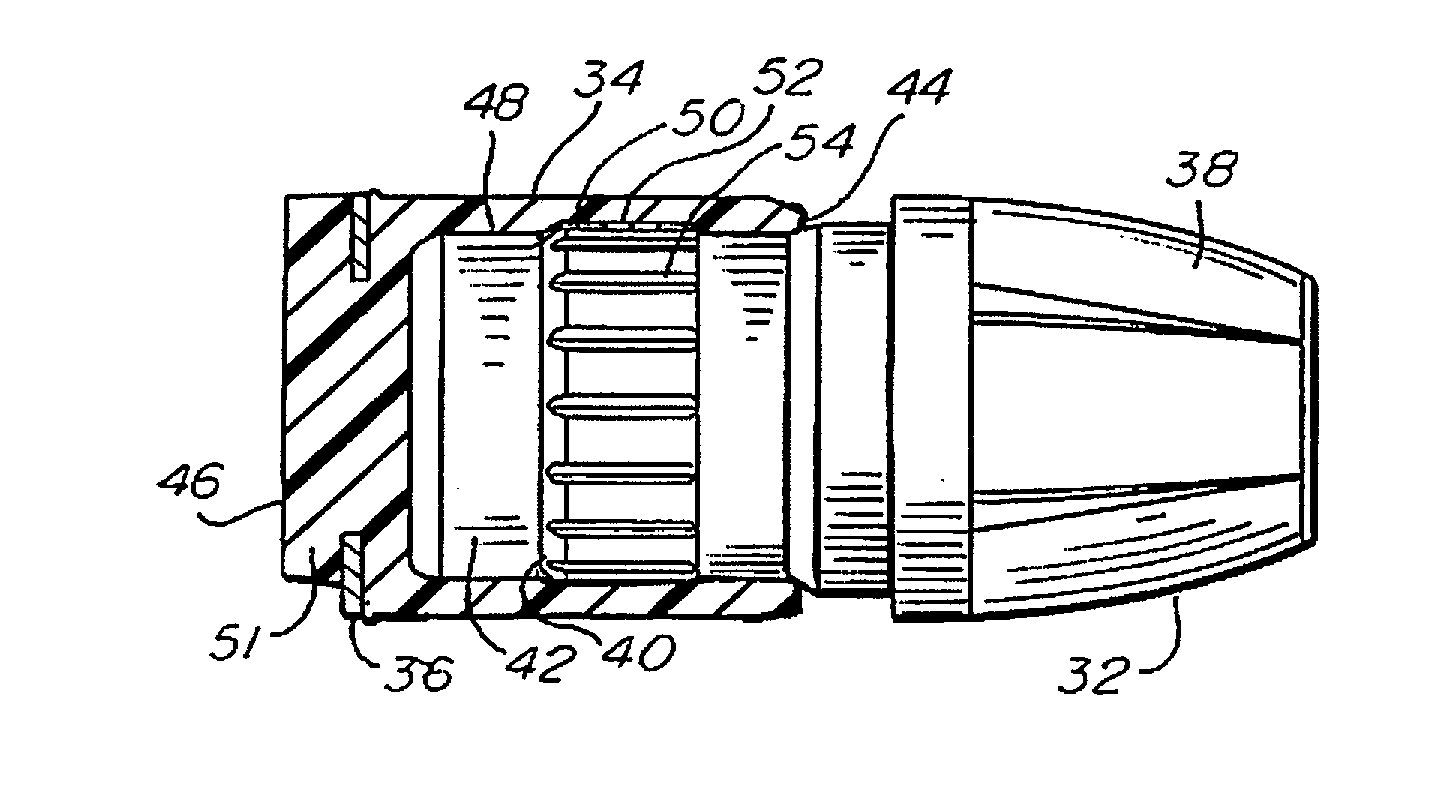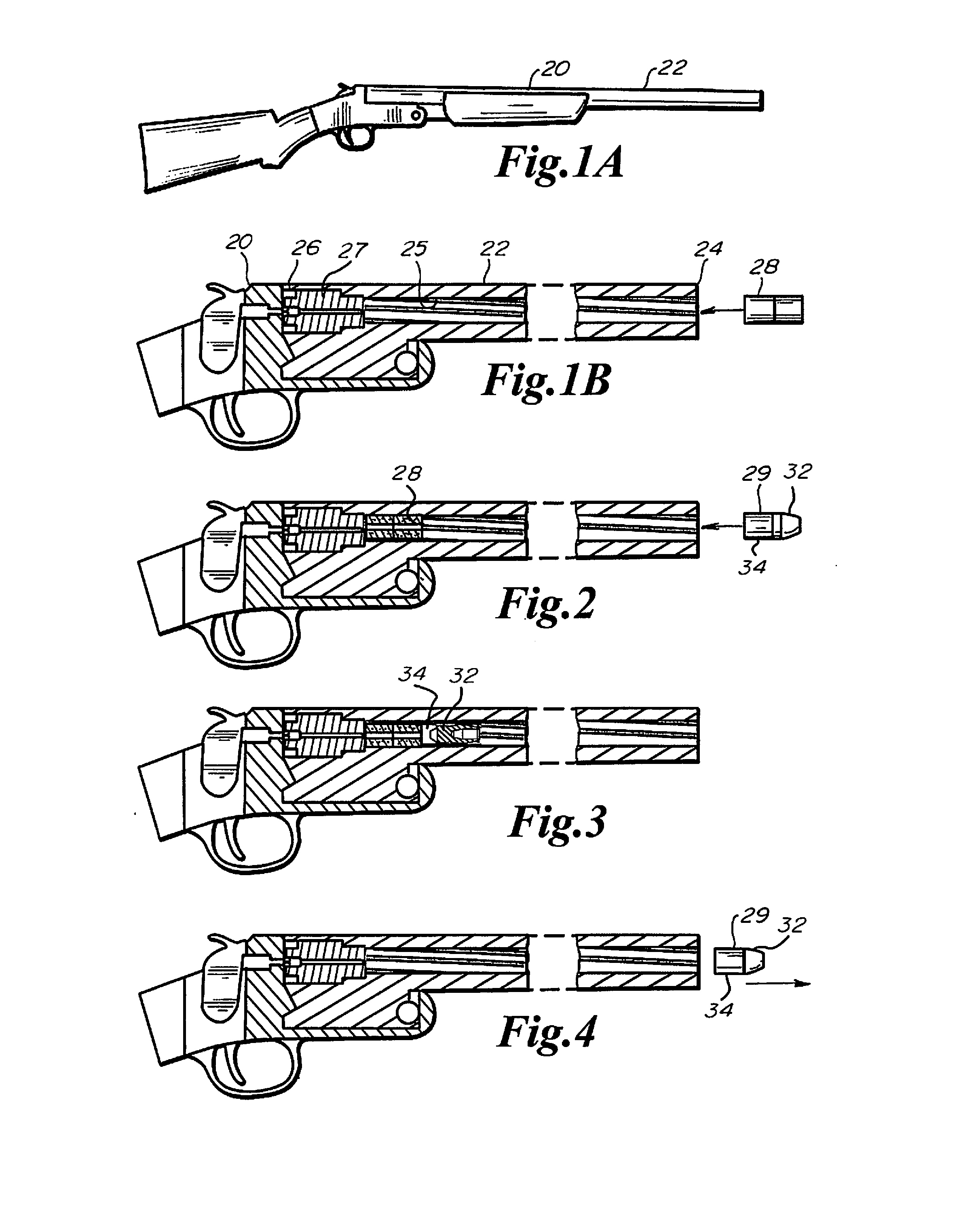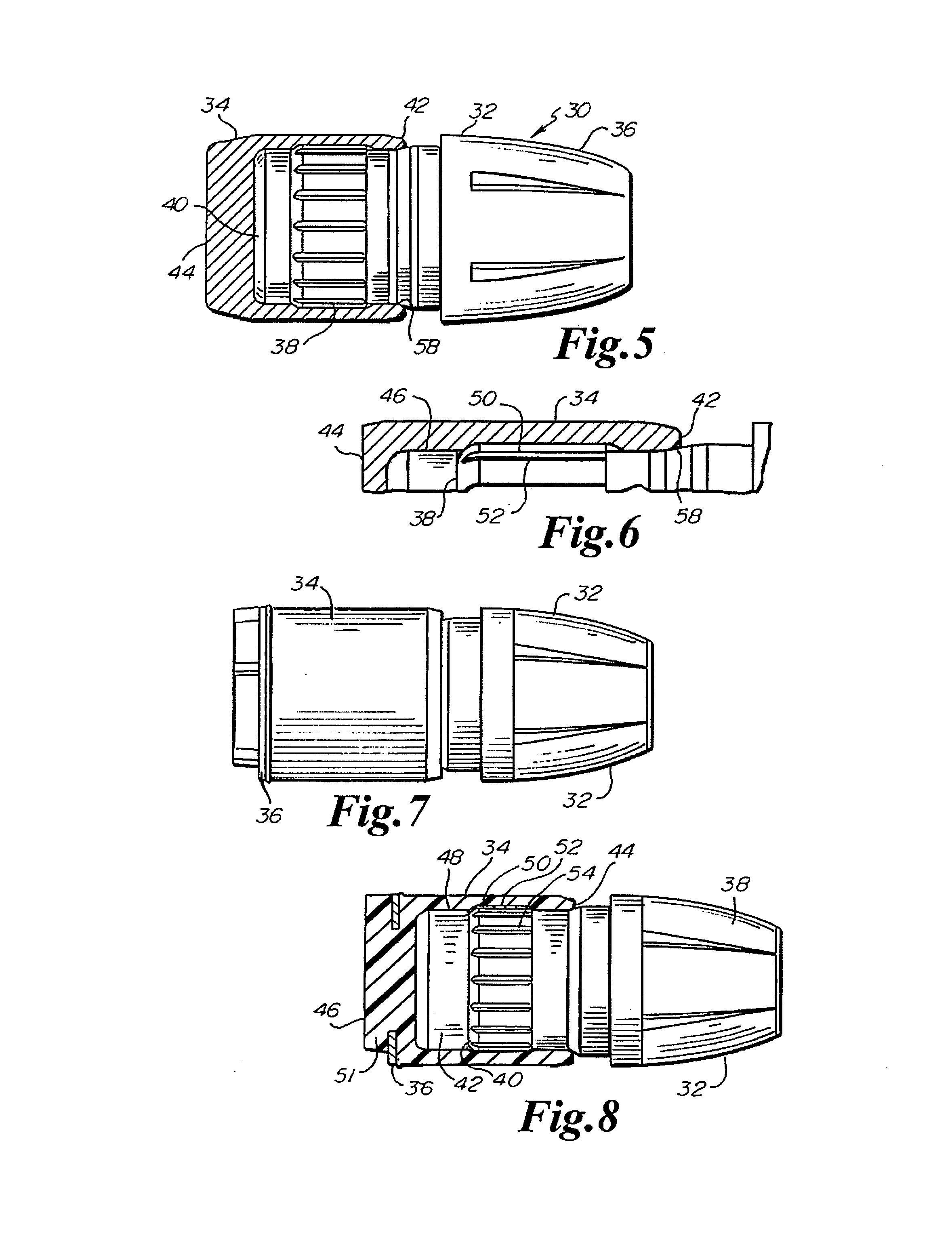Muzzleloader bullet system
a bullet system and muzzleloader technology, applied in the field of muzzleloader bullet systems, can solve the problems of creating a substantial safety risk, complicated determination, unique loading process of muzzleloaders, etc., to improve the overall ballistic or firing characteristics of the bullet, reduce the drag of the jacketed bullet in flight, and improve the overall ballistic characteristics of the bullet
- Summary
- Abstract
- Description
- Claims
- Application Information
AI Technical Summary
Benefits of technology
Problems solved by technology
Method used
Image
Examples
Embodiment Construction
[0132]As depicted in FIGS. 1A-5, a muzzleloader 20, for use with the present invention, generally comprises a barrel 22 having a muzzle 24, a breech end 26 with a breech plug 27 therein. The barrel 22 can comprise smooth bore or a rifled bore 25 as depicted in FIG. 1. As depicted in FIGS. 2-4, the muzzleloader 20 may be conventionally loaded by loading a propellant charge 28 through the muzzle 24 of the barrel 22 and pushing the propellant charge 28 toward the breech end 26 of the barrel 22. A projectile 29, with a bullet, and a shiftable cup 34 on the tail of the bullet, according to the invention is positioned in the muzzle 24 of the barrel 22 before being pushed down the barrel 22 with the ramrod until the bullet is seated against the propellant charge 28 As shown in FIG. 3. The muzzleloader is then ready to be fired and the is in an axially elongated state. FIG. 4 illustrates the muzzleloader after the bullet has been fired, the bullet in an axially retracted or compressed state...
PUM
 Login to View More
Login to View More Abstract
Description
Claims
Application Information
 Login to View More
Login to View More - R&D
- Intellectual Property
- Life Sciences
- Materials
- Tech Scout
- Unparalleled Data Quality
- Higher Quality Content
- 60% Fewer Hallucinations
Browse by: Latest US Patents, China's latest patents, Technical Efficacy Thesaurus, Application Domain, Technology Topic, Popular Technical Reports.
© 2025 PatSnap. All rights reserved.Legal|Privacy policy|Modern Slavery Act Transparency Statement|Sitemap|About US| Contact US: help@patsnap.com



